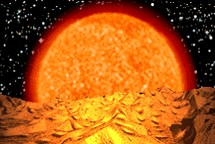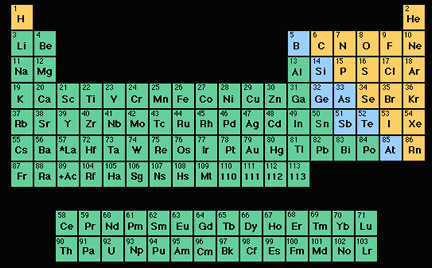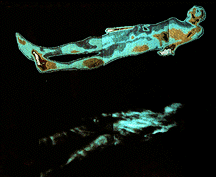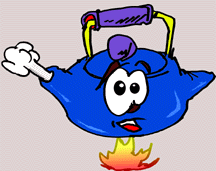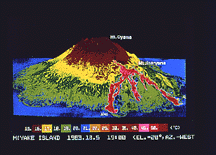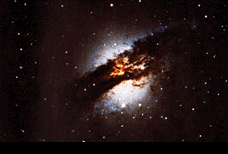ExploraTour: A Peek into the Lives of the Stars
What Happens to Stars Much Heavier Than The Sun?
STAGE 2: Red Supergiant Phase
After the star depletes the hydrogen in its core and moves off the main sequence, the core contracts and heats causing the outer layers to expand. The expansion of the outer layers results in a cooling of the surface temperature. The star gets redder.
Meanwhile the core is getting hotter reaching 150 million K. At this temperature, helium (He) fuses explosively into carbon (C) and oxygen (O).
Gravitational collapse continues to raise the temperature of the core. When the core reaches an amazing 1 billion K, carbon fuses to produce neon (Ne), magnesium (Mg) and oxgyen (O). These elements fuse to produce even heavier elements.
At each stage less total energy is released and thus the stages get progressively more short-lived.
Finally an iron core is produced. Since no energy can be gained by fusing iron to make higher mass elements, the core collapses at blinding speeds.


